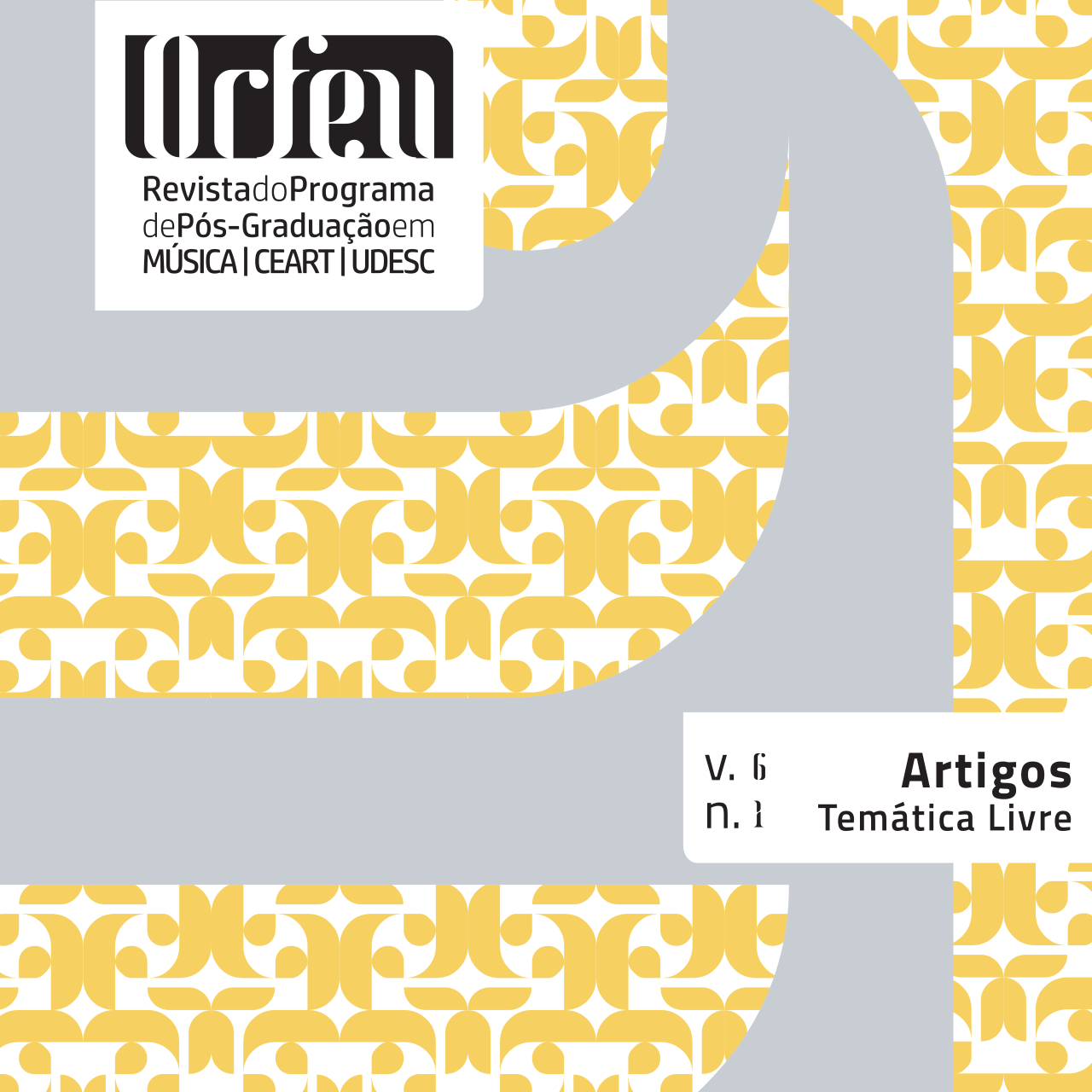Giving body to the ideas: Performance as a process of embodiment
DOI:
https://doi.org/10.5965/2525530406012021e0006Keywords:
Musical communities, Locality, Ideology, Popular music, Musical performanceAbstract
This essay aims to discuss performance, not only as transitory and spontaneous dimension, but also wondering about the materials to be performed, as textual dimension (technical, aesthetical, and values), which, as a spectrum, circulates over the imagination of a certain community and it manifests itself during the performance, incorporating itself in the social body. Through authors such as Shelamay and Appadurai, it is possible to understand the performative practice as representations and encenation of these texts, and at the same time, as a way to introject them in subjects, creating unity in those communities, enabling its reproduction. So, it is possible to imagine the performance as a reincarnation of old values and meanings, which returns, as imaginary reminiscence, walking among the livings, modeling their histories.
Downloads
References
AGAWU, Kofi Contesting Difference. In: CLAYTON, Martin; HERBERT, Trevor; MIDDELTON, Richard. The cultural studies of music. New York: Routledge, 2003. p. 227-237.
ALTHUSSER, Louis. Ideologia e aparelhos ideológicos de Estado. Trad. Joaquim José de Moura Ramos. Lisboa: Presença; Martins Fontes, 1970.
APPADURAI, Arjun. The production of locality. In: APPADURAI, Arjun. Modernity at large: cultural dimensions of globalization. Minneapolis: University of Minnesota Press, 1996. p. 178-99.
BRANDÃO, Ricardo Augusto de Lima; PAIVA, Rodrigo Gudin. Toicinho Batera: notas e reflexões sobre a trajetória do baterista Lourival Galliani. Opus, v. 25, p. 122-143, maio/ago. 2019a.
BRANDÃO, Ricardo Augusto de Lima; PAIVA, Rodrigo Gudin. Toicinho batera: reflexões sobre o desenvolvimento musical de Lourival Galliani. In: CONGRESSO BRASILEIRO DE PERCUSSÃO, 2., 2019, Belo Horizonte. Anais [...]. Belo Horizonte, 2019b. p. 65-73.
CARVALHO, José Alexandre. Infraestrutura e Superestrutura na rítmica da Música Popular. Anais do SEFIM, Porto Alegre, v. 2, n. 2, p. 356-358, 2016.
COOK, Nicholas. Fazendo música juntos ou improvisação e seus outros. Trad. Fausto Borém. Per Musi, Belo Horizonte, n. 16, p. 7-20, 2007.
COOK, Nicholas. Beyond the score: music as performance. 1. ed. New York: Oxford University Press, 2013.
JAMES, Cyril L. R. Os Jacobinos Negros: Toussaint L’Overture e a revolução de São Domingos. Trad. Afonso Teixeira Filho. São Paulo: Boitempo, 2010.
KAPCHAN, Deborah A. Performance. In: FEINTUCH, Burt (ed.). Eight Words for the study of Expressive Cultures. Urbana: University of Illinois Press, 2003.
LIMA, Rodrigo. Edgar Varése e Pierre Schaeffer: por uma emancipação do som. In:CONGRESSO DA ANPPOM, 17., 2007, São Paulo. Anais [...]. São Paulo, 2007.
MARSALIS, Wynton. Moving to the higher ground: how jazz can change your life. United States: Wynton Marsalis Enterprises, 2008.
MARX, Karl. O 18 de Brumário de Luís Bonaparte. Trad. Nélio Schneider. São Paulo: Boitempo, 2011.
MEYER, Leonard. El estilo en la música: teoría musical, historia e ideología. Madrid: Pirámides, 2000.
MONSON, Ingrid. Saying Something: Jazz Improvisation and Interaction. Chicago: University of Chicago Press, 1996.
NATTIEZ, Jean-Jacques. O combate entre Cronos e Orfeu: ensaios de semiologia musical aplicada. Trad. Luiz Paulo Sampaio. 1. ed. São Paulo: Via Lettera, 2005.
PRANDI, Reginaldo. Mitologia dos Orixás. São Paulo: Companhia das Letras, 2001.
RUFINO, Luiz; SIMAS, Luiz Antonio. Fogo no Mato: a ciência encantada das macumbas. Rio de Janeiro: Mórula, 2018.
SHELEMAY, Kay. Musical communities: rethinking the collective in music. Journal of the American Musicological Society, v. 64, n. 2, 2011.
SMALL, Christopher. Musicking: the meanings of performance and listening. Middletown, CT: Wesleyan University Press, 1998.
Downloads
Published
How to Cite
Issue
Section
License
Copyright (c) 2021 Ricardo Augusto de Lima Brandão

This work is licensed under a Creative Commons Attribution 4.0 International License.
Authors who submit their manuscripts to be published in this journal agree to the following terms:
1. Authors retain the copyright and grant to the journal the right of first publication, whilst simultaneously permitting their work to be licensed under the Creative Commons License Attribution, which allows the sharing of work with recognition of the authorship and initial publication in this journal.
2. Contributions in this journal are open access; this means they are based in free use, and non-commercial applications.






